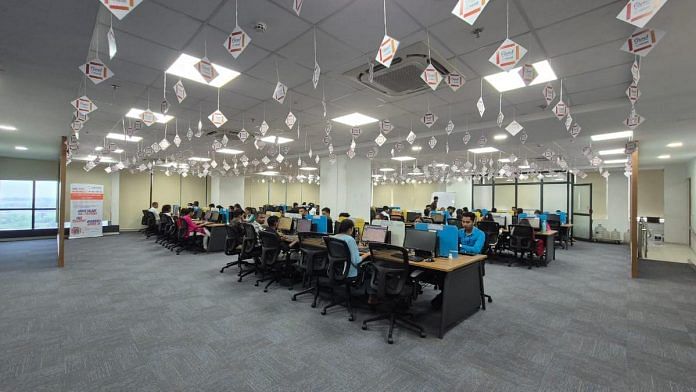Thank you dear subscribers, we are overwhelmed with your response.
Your Turn is a unique section from ThePrint featuring points of view from its subscribers. If you are a subscriber, have a point of view, please send it to us. If not, do subscribe here: https://theprint.in/subscribe/
A lie can travel half way around the world while the truth is putting on its shoes
India, a nation of immense diversity and rapid economic growth, frequently finds itself positioned lower in global quality of life rankings than many of its counterparts. While these rankings often highlight genuine areas for improvement within India, a critical examination reveals that their methodologies often rely on metrics that inadequately capture the nuances of a complex society, leading to a skewed and sometimes misleading portrayal.
Before delving into the limitations of these metrics, it’s crucial to acknowledge the aspirational benchmarks set by nations consistently lauded for their high quality of life. Countries like those in the European Union, Japan, Singapore, Taiwan, and South Korea, along with other OECD countries, consistently rank at the top. This is primarily due to their robust welfare states, advanced healthcare systems, high per capita incomes, superior infrastructure, strong social safety nets, low corruption levels, and often, exemplary environmental standards and civic freedoms. These nations have invested heavily in human capital, fostering environments where citizens generally enjoy long, healthy, and fulfilling lives with extensive opportunities.
However, applying the same yardstick uniformly across vastly different socio-economic and cultural landscapes, as many global indices do, inherently disadvantages nations like India. The very definition of “quality of life” becomes a contested terrain when viewed through diverse lenses. When EAM Jaishankar announces in his press interactions that because its democracy works, India is able to feed its people. The logic is not merely flawed. It is far from the truth. Until, India acknowledges the economic fact that it remains an inequitable economy, it can never make the radical alterations required to advance growth with equitable distribution. When India became Chair of G-20, the propaganda led by EAM Jaishankar went overboard. India became Chair only because it came to us by the criteria of a circulating leadership. There are multiple reports of how India, in utter shame, hid its poor behind smokescreens and only put on display the splendour. This was political denial at its very worst. Each time there is a major conference that India hosts, vast sums of funds are expended on infrastructure and beautification, and they collapse only because they were hurried projects built for short-term effect and not sustainable.
One of the most significant criticisms levelled against these global rankings is their over-reliance on purely quantitative, often Western-centric, indicators. Metrics such as GDP per capita, while important, fail to account for the informal economy, the efficacy of public services, or the purchasing power parity differences that dramatically impact the real cost of living and, therefore, the actual quality of life for the average citizen. A higher GDP per capita in a developed nation might translate to expensive healthcare and housing, whereas a lower GDP per capita in India might still afford a comfortable life due to lower living costs and stronger community support systems.
Furthermore, many indices heavily weight subjective perception-based surveys. While public opinion is valuable, these surveys can be influenced by media narratives, cultural expectations, and even a lack of awareness of global standards. For instance, a citizen in a developed nation might report lower satisfaction due to higher expectations, while an individual in a developing country might report higher satisfaction with fewer material comforts due to strong social bonds or a different cultural emphasis on well-being. This subjectivity can lead to inconsistent and incomparable data points across diverse populations.
Another flaw lies in the selection and weighting of specific indicators. Some indices prioritize factors like press freedom or political rights, which, while undeniably crucial for a healthy democracy, may not directly impact the day-to-day lived experience of basic quality of life for the majority. Conversely, aspects vital to the well-being of a large population, such as access to affordable public transportation, traditional support networks, or the vibrancy of local communities, might be underrepresented or entirely overlooked. The concept of “happiness,” for example, as measured by some reports, has been criticized for being culturally specific and not fully capturing the diverse forms of well-being.
Moreover, the data collection methods employed by some ranking agencies have faced scrutiny. Concerns have been raised about the transparency of data sources, the representativeness of samples, and the potential for “cherry-picking” information to fit a pre-determined narrative. In some cases, data relies on official statistics that may not always reflect the ground reality, or it might be based on opinions of a small, unrepresentative group of experts.
In conclusion, while global quality of life rankings serves as a useful tool for highlighting disparities and prompting policy discussions, their application to India often presents an incomplete and at times misleading picture. To truly assess and compare the quality of life across nations, a more nuanced approach is required – one that moves beyond a simplistic aggregation of standardized metrics. This approach must embrace a broader, culturally sensitive definition of “quality of life,” incorporate diverse data sources, and acknowledge the inherent complexities and unique strengths of nations like India, rather than solely measuring them against benchmarks set by economically and socially distinct countries. Only then can we move towards a truly equitable and accurate understanding of human well-being on a global scale.
Ranjan Solomon is a political commentator and human rights defender based in Goa.
These pieces are being published as they have been received – they have not been edited/fact-checked by ThePrint.




